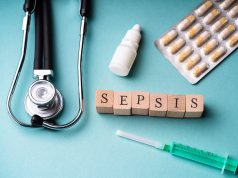Findings show similar 90-day mortality with seven or 14 days of treatment
By Lori Solomon HealthDay Reporter
MONDAY, Oct. 21, 2024 (HealthDay News) — Treating hospitalized patients with bloodstream infections with antibiotics for seven days is noninferior to treating for 14 days, according to a study presented at the annual meeting of the Infectious Diseases Society of America (IDWeek), held from Oct. 16 to 19 in Los Angeles.
Nick Daneman, M.D., and Rob Fowler, M.D., from the University of Toronto, and colleagues randomly assigned 3,608 hospitalized patients (ward and intensive care unit [ICU]) with bloodstream infections to receive seven- or 14-day (1,814 and 1,794 patients, respectively) antibiotic treatment.
The researchers reported that most infections were community-onset (75.4 percent), followed by hospital-acquired (13.4 percent) and ICU-acquired (11.2 percent). The urinary tract (42.2 percent), abdomen (18.8 percent), lung (13.0 percent), vascular catheters (6.3 percent), and skin or soft tissue (5.2 percent) were the most common bacteremia sources. Ninety-day mortality occurred in 14.5 percent of patients receiving seven-day and in 16.1 percent of patients receiving 14-day treatment, demonstrating noninferiority of shorter duration treatment. Noninferiority was confirmed in a per-protocol analysis (−2.0 percent; 95 percent confidence interval, −4.5 to 0.6). Findings were similar across secondary clinical outcomes and prespecified patient, pathogen, and syndrome subgroups.
“Finding strong evidence that supports shorter antibiotic treatment durations is a top priority to advance antimicrobial stewardship as drug-resistant bacteria are increasingly becoming a public health threat,” Daneman said in a statement.
Copyright © 2024 HealthDay. All rights reserved.



















